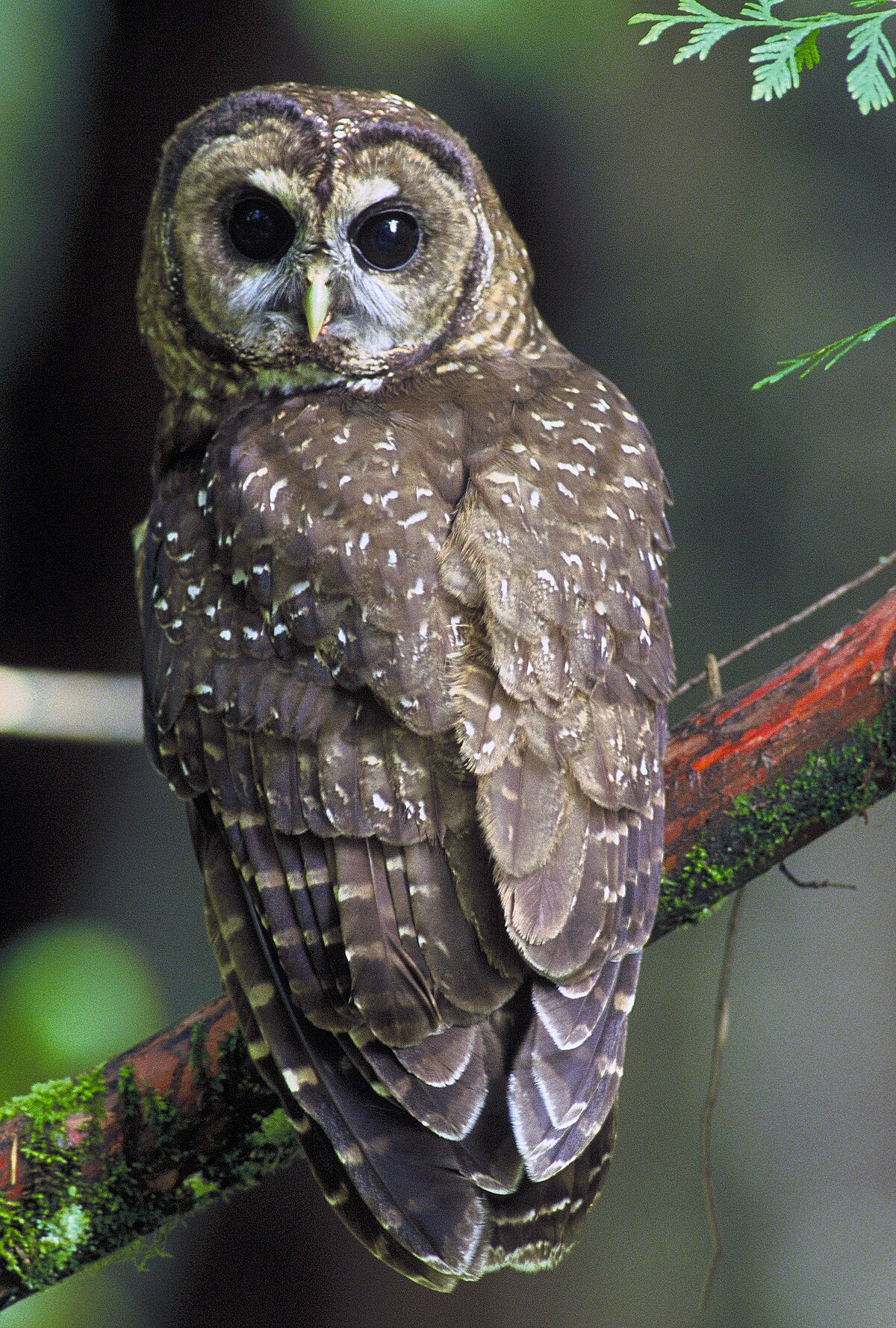NorthernHarrier has pretty much summed up much of my thinking, especially back in #17.
I think we can put aside all the confusion about how the Barred Owl got into the western forests, and how much humans had to do with it, and just ask: What to do now? We can't undo the habitat alteration that has already occurred, and anyway it's clear that Barred Owls can use all of the same habitat that Spotted Owls do, plus some, and do so more efficiently. (I've seen data indicating a given territory can support up to 4x as many Barred as Spotted.)
The question of ecosystem function is absolutely the heart of the matter. Spotted Owls and Barred Owls do NOT perform the same functions. The Spotted Owl is a specialist that primarily takes only a few species as prey: woodrats and flying squirrels mostly, with a few other small mammals taken sometimes. The Barred by contrast eats virtually anything it can catch. Literally. Mammals, birds, amphibians, reptiles, fish, crustaceans - they are all food to the Barred Owl. This means many species that formerly were not prey for the forest owls, are now being taken by them, and this has huge potential consequences for the ecosystem. Basically it is being disrupted and the results are not predictable. There is considerable concern for populations of Northern Screech-owls for example, as they never had to worry about being tracked down and killed when they vocalize, but that's a thing now.
So that's what is at stake - the ecosystem function of the forests. The proximate effect that has received the most attention is the potential loss of Northern Spotted Owls; this might have something to do with the fact that they are the most intensively studied bird in the west, maybe in all of North America, and billions of dollars have already been invested in protecting it. Whole economies were disrupted in the 80s and 90s and the Forest Practices Act was basically rewritten, with that bird as a central focus. But we really have very little idea what else will be affected and how badly, because none of the other species are studied with anything like that intensity.
Those of you who have been proposing ideas without bothering to look up the basic facts about the owls themselves and the western forest habitats - you aren't really helping here. Relocation isn't even a possibility. Again: the Barred Owl is better fit for the environment than the Spotted, and will outcompete it everywhere. There is no fantasy island where Spotted Owls could live untroubled by the outside world.
Also some of you maybe haven't read what USFWS has proposed. They are talking of a continuous cull for 30 years. That's US regulatory parlance for "forever." It is certainly possible, given how things work, that they might just stop after 30 years - or sooner, if political or scientific support eroded - and ultimately accomplish nothing. It's also quite possible that it becomes an institutional custom and is carried out indefinitely. We can't really know, so we can't really draw conclusions about that. It really comes down to, what should we do now?









